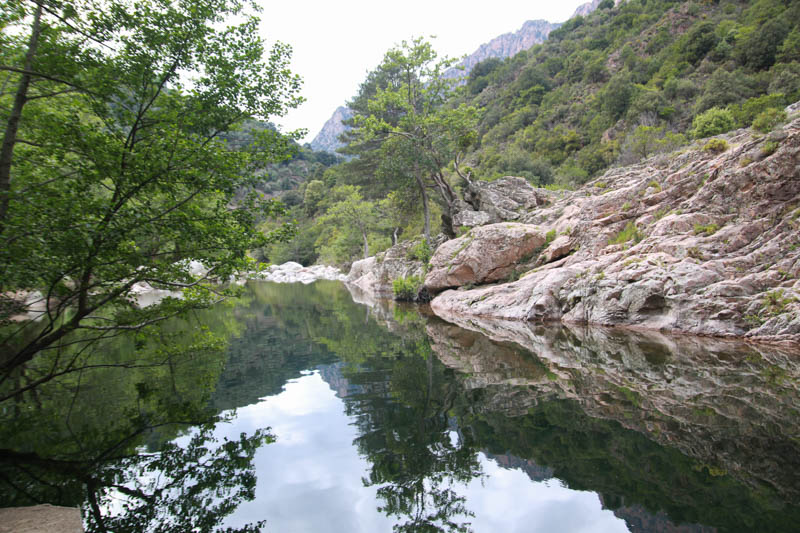Gorges de la Spelunca
The Gorges de la Spelunca (also known as Gorges de Spelunca) is a stunning natural canyon located in southern Corsica, nestled between the villages of Ota and Évisa. This dramatic gorge stretches approximately 2 kilometers and is carved by the Tavulella River, which converges with the Aïtone and Onca rivers. The result is a breathtaking landscape of towering granite cliffs, lush forests, and crystal-clear waters. 🥾 Hiking Trails One of the most popular ways to explore the Gorges de la Spelunca is by hiking the Tra Mare e Monti trail. This historic mule track begins in Évisa at an altitude of 850 meters and descends through a shaded forest of chestnut and holm oak trees. Along the way, hikers can learn about the local flora and fauna, the construction of muleteer yards, and the building of Genoese bridges through informative signs. The trail culminates at the double bridge, where it connects with the road leading to Ota. This easy walk offers cultural insights and opportunities for a picnic and a refreshing swim in the cool waters of the river. 🌉 Genoese Bridges The gorge is home to two remarkable Genoese bridges: Pont de Zaglia: Built in 1797 by Genoese mason Antonio Bensa, this bridge was constructed to facilitate movement for transhumant herders and residents facing land crises. Its impressive single-arch design is a testament to Genoese engineering. The bridge was classified as a historical monument in 1990. Wikipedia Pont de Pianella: Located downstream where the Tavulella River merges with the Lonca stream, this 18th-century bridge is also classified as a historical monument. 🌿 Flora and Fauna The Gorges de la Spelunca boasts a rich ecosystem: Flora: The area is home to wild pear trees, Laricio pines, holm oaks, and arbutus trees, which provide shelter and sustenance for the local wildlife. Fauna: Visitors may encounter species such as the Corsican nuthatch, green and yellow whip snake, wall lizard, and the Corsican salamander. 📍 Access and Recommendations Location: The Gorges de la Spelunca are situated between the villages of Ota and Évisa in southern Corsica. Best Time to Visit: Spring and early autumn offer pleasant weather for hiking, with cooler temperatures and vibrant foliage. Safety Tips: Always inform someone of your planned route and expected return time. Avoid hiking alone, stay on marked trails, and be cautious of sudden weather changes that can lead to swift water rises.
 google.com
google.com